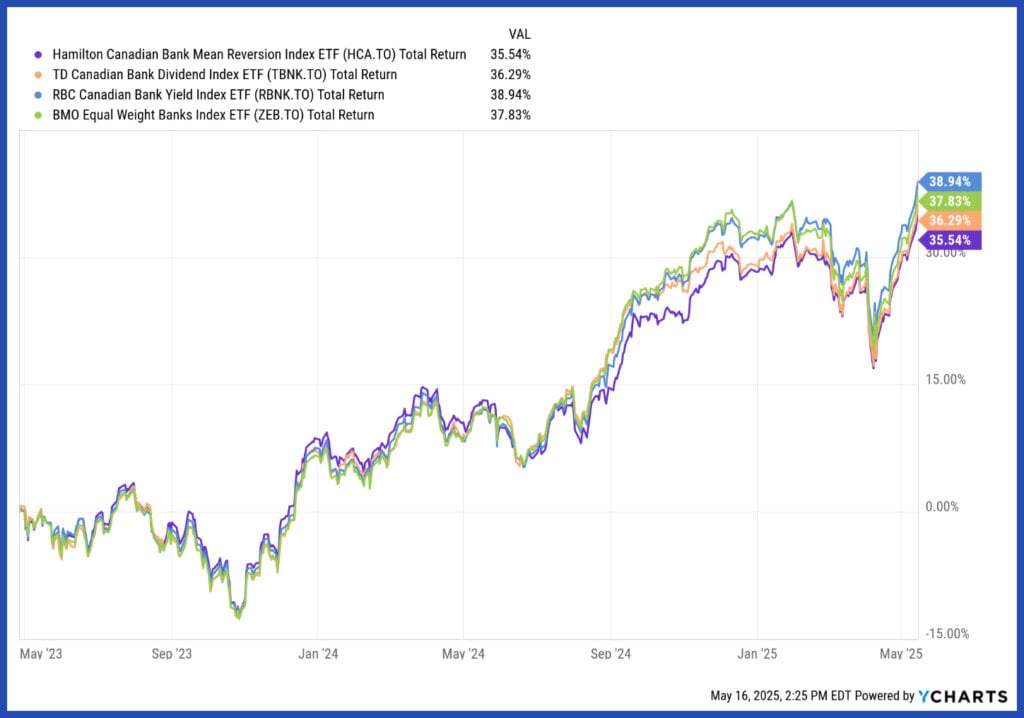Then there’s the Hamilton Canadian Financial institution Imply Reversion Index ETF (HCA), which tracks the Solactive Canadian Financial institution Imply Reversion Index TR. Each quarter, HCA usually allocates 80% of its portfolio to the three banks which have underperformed just lately, and 20% to the three which have outperformed, banking (pun meant!) on the concept underperformers may bounce again.
These customized methods can come at a better value. TBNK costs a 0.28% MER, RBNK is available in at 0.32%, and HCA tops the checklist at 0.45%. To this point, these additional charges haven’t translated into main outperformance. From Could 2023 to Could 2025, complete returns for these ETFs have been inside about 1% cumulatively above or under the easier equal-weighted ZEB.
HCA, TBNK, RBNK and ZEB historic cumulative complete returns

Use case: These ETFs simply is perhaps a match if you wish to get a little bit fancier together with your publicity—making a extra energetic guess on which banks will outperform primarily based on dividend progress, yield or worth reversion—and are snug paying greater charges for the likelihood (not a assure) of outperformance.
These ETFs fall below the umbrella of other methods, that means they transcend conventional long-only buy-and-hold approaches. They usually make use of derivatives or leverage, aiming to boost some facet of publicity, whether or not that’s yield, worth returns or each.
A traditional instance is the BMO Lined Name Canadian Banks ETF (ZWB). It holds all six main banks, mirroring ZEB, but it surely layers on a covered-call technique by promoting choices on its holdings. This caps upside however boosts earnings, producing a yield made up of dividend earnings, capital positive factors and return of capital.
BMO sells these calls out of the cash and on a discretionary foundation, that means not each place is roofed always, giving the portfolio barely extra upside potential in comparison with systematic call-writing methods. You may get a stable 6.66% distribution yield, however with way more muted worth appreciation.
The Hamilton Enhanced Canadian Financial institution ETF (HCAL) can be utilized for a special strategy. It doesn’t use choices in any respect. As an alternative, it applies 1.25 occasions (125%) leverage to the Solactive Equal Weight Canada Banks Index, the identical one utilized by ZEB, HEB and HBNK.
In contrast to typical leveraged ETFs that reset each day through swaps, HCAL borrows cash utilizing money margin loans, which implies its returns aren’t distorted by each day compounding. This setup amplifies each upside and draw back, and likewise boosts yield to six.42%, as distributions are paid on the bigger notional publicity.

